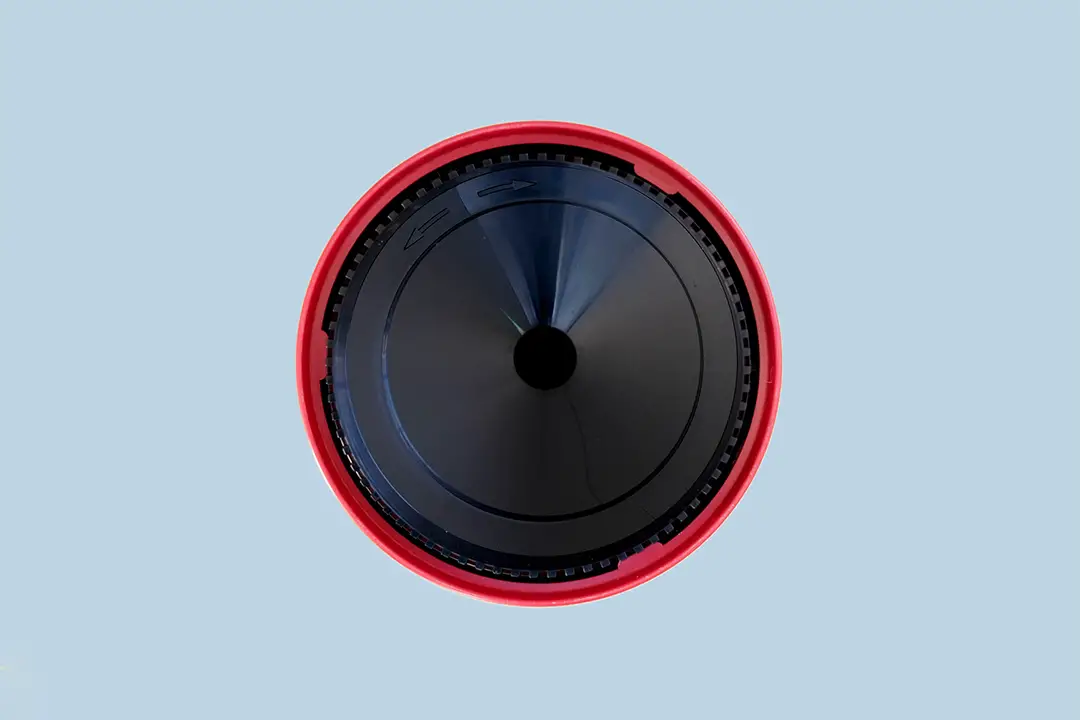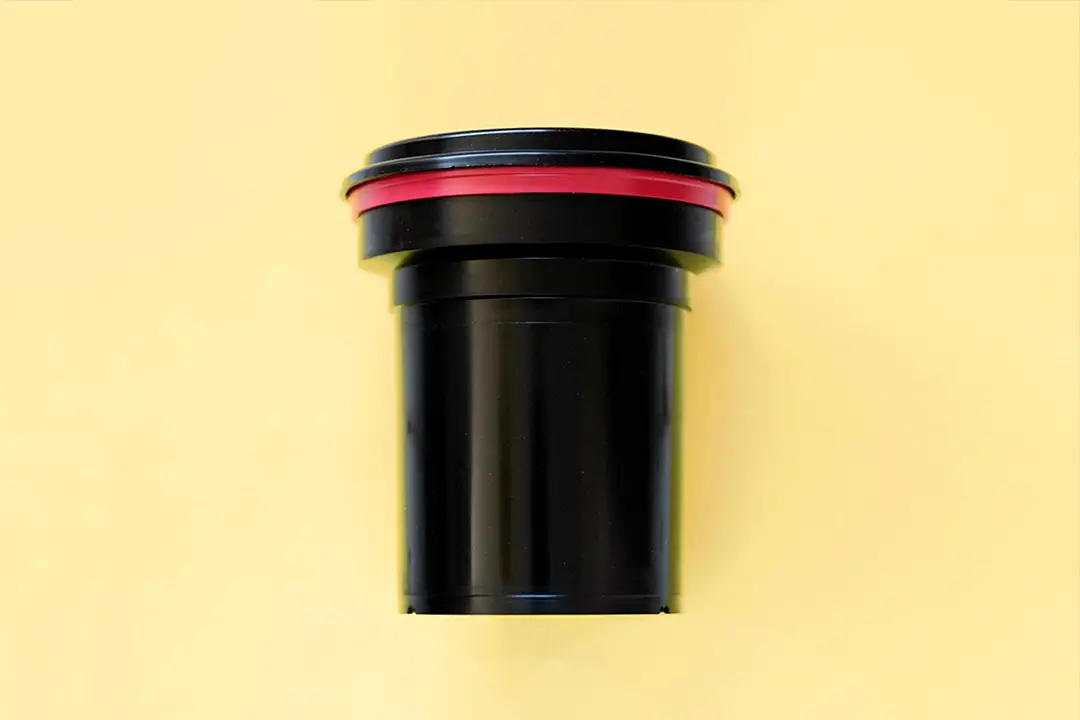We are Parallax Photographic. We sell film, paper, chemistry and everything else you need if you’re shooting film. The four of us: Alice, Frank, Sam and Sol, set up Parallax in 2016 with the intention to support the use of film, and love of photography, into the future. You can come and visit our shop in Brixton, to browse, buy things or just have a chat.
We all shoot film and process it ourselves so have fairly extensive knowledge of the products we sell. Our reviews are based on our combined years of experience doing it ourselves and helping our happy customers.
So you have decided to start developing your film? We have helped a lot of people get set up to process their film at home. It is a good choice – it’s surprisingly simple and can save you huge amounts of money. You also get the added benefit of handling your film from start to finish, which means you learn a lot more, and you know how it’s done.
When it comes to developing at home you have a few options available. There are machine processors, like the Jobo systems, or there are the tanks, from various suppliers that you can use by hand. In our opinion, the Paterson Universal Tank is the obvious place to start if you don’t have any equipment. Paterson make a range of darkroom equipment here in the UK, making it very easy to get additions or replacements if you need them. The Universal tank is part of their Super System 4 range – which is basically their full range of different sized developing tanks.

The Universal Tank comes with the main tank, a funnel that clicks into the top, a central column, an agitator, a lid and two reels. In terms of value for money, the Universal Tank is definitely the one to get if you are processing for the first time. You can develop two 35mm films or a single 120 at a time, so it’s flexible if you shoot both formats. Even if you plan to move up to a larger tank at a later date, it’s worth the price because it includes the two reels (with all the other tanks these are additional extras). It will also make a good backup if you just want to do one or two rolls.
The trickiest thing to get used to when using the tank is loading the film onto the reels. This is definitely something that is best to practice with a test roll of film before doing it for real. There are two notches on the outer rings that you need to line up. You then guide the film under these until it gets past the ball bearings. At this point you can hold the reel in both hands and move the two sides back and forth in opposite directions, this will feed the film through the reel. It can be a bit fiddly to feed the film in, but once you’ve done that the rest of the process is pretty smooth. Just remember that this all has to be done in complete darkness, in a light tight room or changing bag.
With the hard bit out of the way the next step is pretty straightforward. The reel slots over the central column inside the tank and the funnel lid goes on top and is locked into place. The click isn’t as satisfying as you might expect, considering your exposed film is in there. However, we have never experienced any issues or light leaks.
Chemicals are poured into the central funnel, which fills the tank from the bottom up. To empty the tank you tip it sideways and the liquid pours from the outer edge of the funnel. It can be a bit messy, so be careful how you pour it out and do it somewhere that can get a little wet (just in case). When agitating you have two options, inversion or with the agitator. If you are using the inversion method you need to put the cap on. This can take a few second to get firmly in place. This is another thing worth practising before actually developing. We’d have to say in all our years of processing we have never known the cap not to leak. It’s only slight, but it will always happen, so wear gloves… but don’t worry, there’s nothing wrong.
The funnel lid and column are very effective for washing the film at the end of development. The water is pushed through the central column and flows up from the bottom and out from the edge of the funnel. It keeps a constant flow of water running through which is exactly what you need for nicely washed film. If you have a tap that the Paterson Force Film Washer will fit on to, you can have an even more reliable flow that will also cut down on washing time and water.
There are a few things to be aware of. The reels need to be completely dry before you try loading them or your film will stick and you won’t get far. Be patient and let the reels dry before processing again. Too much fiddling in the dark with the film and it will get bent and marked, which might result in you losing frames.

Also, you need to tap the tank after each agitation to release any air bubbles. But don’t get too carried away and put too much force into in on a hard surface. It has only happened to us once, but it is possible to crack the tank.
We believe the Paterson Universal Tank to be the best start point for somebody looking to develop colour and/or black-and-white film. Paterson equipment is affordable enough to set yourself up with everything you need, no matter the amount of film you are shooting. Most importantly, it’s well made and easy to use. In all the years we have been setting people up with developing kits, we have never had any complaints – so it must be doing something right.
It is also worth noting that if you need a full set up, you can get the Paterson Film Processing Kit – which includes the Universal Tank and all the other equipment you need to get going.
All the products mentioned in this article are available in our London shop or online from our website – parallaxphotographic.coop
Share this post:









Comments
Frank Lehnen on Paterson Universal Developing Tank – by Parallax Photographic
Comment posted: 01/10/2017
My niggles are first the lid! OK it's leaking a bit, but above all it takes time to close it properly. You set it on to and have to go all around to make sure the lid engages the lip of the tank correctly... takes a lot of time when developing time sensitive color stuff. 10 seconds out of 3.5 minutes are meaningful. Jobo tanks seem to be faster to close or am I wrong?`
Then there's the reels. They work well... mostly. But I always have trouble loading them in a changing bag or in hot, humid weather. Even if completely dry, the humidity in the bad or sweat from army and hands in my darkened toilet / darkroom are enough to make loading very difficult. Mind you, my reels are always completely dry before I load them.
Of course metal reels should be the solution but then I hesitate to try them as it seems hard for me to guide the film in the correct spiral....
Any ideas about that?
Comment posted: 01/10/2017
Terry B on Paterson Universal Developing Tank – by Parallax Photographic
Comment posted: 01/10/2017
If you use 35mm film exclusively and may not warm to the idea of loading films in total darkness, you may like the idea of a daylight tank. Agfa Rondinax comes to mind, but these rely on a loading procedure dependent upon a part that can deteriorate over time and given their age, a lot offered for sale fetch high prices and may not be in 100% condition.
The Jobo 2400, at first, seems somewhat complicated, especially if you read the loading instructions in isolation and without the tank to hand. Fortunately, if you see one for sale without instructions (you definitely need them) they can be found here: http://www.jobo-usa.com/images/manuals/Tageslichttank_2400.pdf
Malcolm Myers on Paterson Universal Developing Tank – by Parallax Photographic
Comment posted: 01/10/2017
Leo Tam on Paterson Universal Developing Tank – by Parallax Photographic
Comment posted: 01/10/2017
Keep them bone dry and don't load film on humid days. Also make sure the ball bearings are freely moving, and scrub them clean with hot water.
James on Paterson Universal Developing Tank – by Parallax Photographic
Comment posted: 01/10/2017
I start by rolling the first roll of 120 onto the reel as normal, but leave it hanging off of the reel by a couple of inches. When it's almost all the way on, I carefully peel the tape off and use it to tape the end of the first roll to the start of the second roll, then roll that on as normal. I usually have to unroll the second roll almost all the way to get the paper out of the way, but it's not that big of a deal.
Warning: the first time I tried this, I spooled the second roll on without taping it to the first roll. The two films overlapped and I ended up with several undeveloped frames on both rolls. The tape is absolutely necessary.
David Hill on Paterson Universal Developing Tank – by Parallax Photographic
Comment posted: 02/10/2017
But .. but someone's bound to say this, so I might as well: I *like* stainless. Maybe I'm a traditionalist, but I never took to the Patterson tanks and reels, and I swear by my stainless tanks and reels. Yeah, you gotta learn to load the reels in the dark, so Patterson has a lead on the beginner market. But once THAT's learned, stainless gear is easy use, easy clean, and no worries for loading if the reel is a little damp from the last cycle. They transfer temperature in a waterbath instantly. They pour quickly. They last forever -- unless you drop a reel and bend the wires. Don't drop a reel, ok? but if you do, you can usually bend the wires back into shape. (Tell me, do the Patterson reels still shatter if you drop them? The early ones did. I hope they fixed that.) Stainless tanks might take less chem volume, I dunno, but they're certainly more compact for storage. And just to be clear, the stainless tanks often leak a little, too .. depends on the tank .. but my oldest Omega tanks with the easy-on-easy-off no snag steel-to-steel lid seal just don't bloody leak. Amazing, really.
All that's beside the point, to be sure. To each his own, and thanks again, Parallax -- if you're bringing folks into the darkroom, you're doing things right.
Dan Castelli on Paterson Universal Developing Tank – by Parallax Photographic
Comment posted: 03/10/2017
1. The lid is a tight fit - I submerge it in a tray of very warm water, and it becomes pliable, which allows you to fit it to the cover.
2. Have a simple hair dryer nearby (but not near any liquids) to speed dry the reels of you're processing multi rolls...
3. As weird as this will sound, you can submerge the reel & film underwater and load the reel w/out binding. Remember this must be done in total darkness, and the water must be near the temp. of the developer. Also remember, once wet, the film is very fragile, and will be damaged or destroyed if you're not careful This is last ditch, 'got nothing to lose' technique; sort of like a doomsday action (I have actually done this - it works.)
I returned to using these reels & tanks after working w/stainless steel reels & tanks. I could no longer feel the film on the steel reels after a hand injury damaged nerves in the tips of two fingers on my right hand. I can load these reels w/out any problems due to the auto load feature. They enable me to still develop my film. They do use a bit more chemistry than the steels tanks, but they do just as good a job as steel tanks. Try them out.
karwasz on Paterson Universal Developing Tank – by Parallax Photographic
Comment posted: 03/10/2017
You can develop two rolls of 120.
Mike Constantine on Paterson Universal Developing Tank – by Parallax Photographic
Comment posted: 16/10/2017
Then I found a way around it... this only works with a manual loading camera so anyone with those newfangled auto loaders are out of luck, sorry.... When I load the film in the camera I advance the film until both sprockets are just through the perforations, and with a felt tip marker, put a dot on the film one mm or two from the cassette.
When you come to develop, with lights on, gently pull the film from the cassette until the dot appears, and you should have plenty of film to start to load the spiral, pull it on until the cassette is up to the spiral.
Turn the lights out and gently pull the film from the cassette and crank it into the spiral as normal..... works for me anyway, don't know why I didn't think of it years ago.
Re the white Paterson tank lid, I second the idea of warming it (I always have a bucket of warm water handy to rinse my fingers in, so I put it in there while changing chemicals. Also, when fitting the lid I press down on the centre of the lid to expel some of the air which helps make the top leakproof.
I do have a a 35mm stainless tank which I use occasionally if I'm running short of chemicals, but I've never been brave enough to try a medium format one......
C. Zymler on Paterson Universal Developing Tank – by Parallax Photographic
Comment posted: 24/10/2017
David Alexander-Watts on Paterson Universal Developing Tank – by Parallax Photographic
Comment posted: 28/05/2018